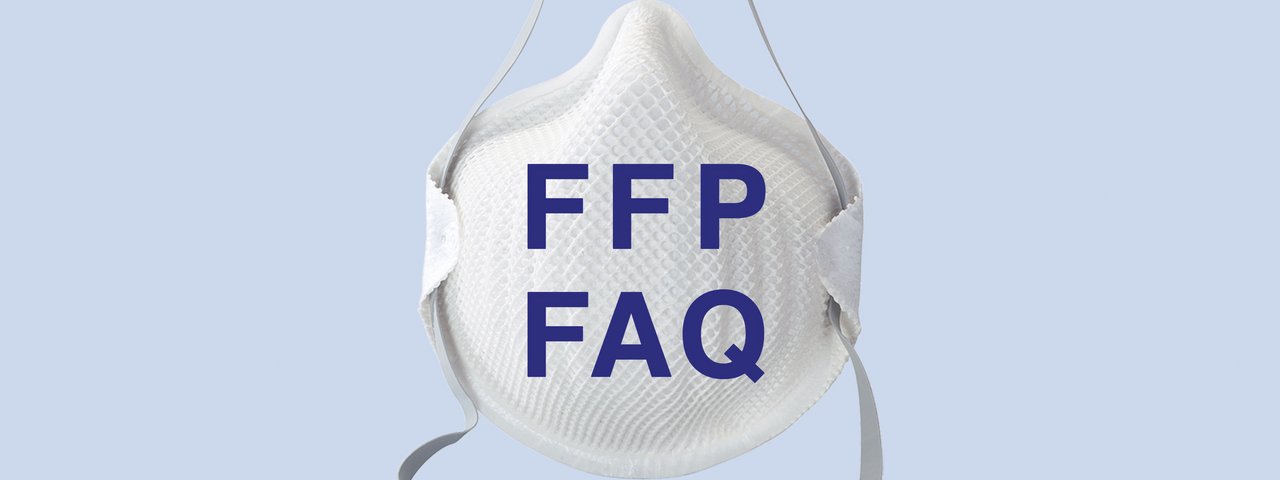Good to know
Protection levels: FFP1 masks, FFP2 masks, FFP3 masks
FFP1, FFP2 and FFP3
FFP masks protect against particulate pollutants such as dust, smoke and aerosols. They are available in the three protection levels FFP1, FFP2 and FFP3. These are standardised across the European Union according to EN 149:2001+A1:2009. Respiratory masks with higher protection levels filter more effectively and therefore can be used against more harmful substances and higher concentrations of contaminants.
Find information about respiratory protection against the Coronavirus SARS-CoV-2 here.
Protection levels: FFP1 masks, FFP2 masks, FFP3 masks
FFP1 masks may be used with contaminant concentrations up to 4 times the workplace exposure limit (WEL).
They protect against non-toxic water and oil based particles. They do not protect against carcinogenic and radioactive substances or airborne biological agents of risk groups 2 and 3 + enzymes.
The total leakage of an FFP1 mask is a maximum of 22%. At least 80% of contaminants are filtered out of the inhaled air.
Common applications for an FFP1 mask are environments with low levels of dust that is not harmful to health.
FFP2 masks may be used with contaminant concentrations up to 10 times the workplace exposure limit (WEL).
They protect against harmful water and oil based particles. They don't protect against carcinogenic substances, radioactive particles, airborne biological agents of risk group 3 and enzymes.
The total leakage of an FFP2 mask is a maximum of 8%. At least 94% of contaminants are filtered out of the inhaled air.
Common applications for an FFP2 mask include handling soft wood, metal, plastics (not PVC) and oil mist.
FFP3 masks may be used with contaminant concentrations up to 20 times the workplace exposure limit (WEL).
They protect against harmful and carcinogenic water and oil based particles, as well as radioactive particles, airborne biological agents of the risk group 2+3 and enzymes.
The total leakage of an FFP3 mask is a maximum of 2%. At least 99% of contaminants are filtered out of the inhaled air.
Typical applications for an FFP3 mask are for example handling heavy metals, hardwood, brake dust, radioactive substances, pathogens such as viruses, bacteria and fungal spores as well as stainless steel welding.
REUSABILITY MARKING
FFP masks labelled "NR" for "non reusable", are deigned to be used over a limited duration of one shift.
FFP masks labelled "R" for "reusable" can be reused beyond the duration of one shift. When handling radioactive and airborne biological agents (e.g. moulds, bacteria and viruses), these FFP masks can only be used once or for a maximum of one work shift.
All Moldex FFP masks labelled "R" have a face seal that can be cleaned and disinfected. They also feature AirWave® Long life pleated filter for low breathing resistance.
FFP masks with the additional label "D" have passed the dolomite clogging test. They have a particularly high dust absorption capacity and offer low breathing resistance over a longer period of time.
It is mandatory for FFP masks marked "R" to have passed the dolomite dust test and voluntary for masks marked "NR".
A valve on an FFP mask is an additional comfort feature that has nothing to do with the FFP protection level. It opens when you breathe out, and remains tightly closed when you breathe in. Warm and moist exhaled air is then conducted directly and unfiltered out of the respirator, while the high filter performance of the FFP mask is retained during inhalation. The exhalation valve ensures a more comfortable climate inside the FFP mask and makes exhaling easier. Moldex offers FFP1 masks, FFP2 masks and FFP3 masks with or without an exhalation valve.
Disclaimer
This information is not legally binding and does not replace personal advice. Please note our terms of use.





